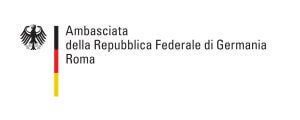Max Liebermann – An Impressionist from Berlin
Exhibition opening

Max Liebermann, Bathing boys, 1899, oil on wood, Galleria d’Arte Moderna, Milan © Comune di Milano – tutti i diritti riservati – Galleria d’Arte Moderna, Milano
Opening: Thursday, 19 September 2024, 7 p.m.
Duration of the exhibition: 20 September 2024 to 9 February 2025
curated by Alice Cazzola
With this exhibition, the Museum Casa di Goethe presents the first comprehensive retrospective of the German-Jewish painter Max Liebermann (1847-1935) ever to be staged in Italy. Born in Berlin, Liebermann is considered one of the most important innovators of late 19th-century German painting. His art and his cultural-political activities, including his role as president of the Berlin Secession and of the Prussian Academy of Arts, provided significant impetus for the modernisation of the Berlin art scene.
The exhibition reconstructs the most important phases of Liebermann’s career through a selection of iconic paintings, drawings and prints. Initially committed to realism and naturalism, in the 1860s and 70s Liebermann was derided as a “poor man’s painter” due to his anti-academic motifs depicting workers in the countryside. Around the turn of the century, bourgeois leisure pursuits, such as riders on horseback or children bathing on the Dutch coast, found their way into his paintings. Liebermann’s colour palette brightened; the shimmering use of light became his unmistakable trademark. Liebermann’s idyllic garden on Lake Wannsee was the final source of inspiration for his late work, which he captured in a series of vividly coloured Impressionist pictures.
Throughout his career, Liebermann cultivated close contacts with France; he was also regularly in Holland, which he described as his “painterly homeland”. Yet Italy too played a decisive role in his artistic development. Between 1878 and 1913, the painter travelled to Italy at least six times. In addition, his works entered the collections of Italian museums, namely in Venice, Florence, Milan, Rome and Trieste. The exhibition in the Museum Casa di Goethe will bring together a selection of these Italian Liebermann works for the first time, alongside a further selection of works from the collection of the Liebermann-Villa am Wannsee in Berlin and other private collections in Germany. The exhibition provides a unique opportunity to rediscover Liebermann, his links with Italy, and thus the broader cultural links between the German and Italian capitals.
The exhibition catalogue “Max Liebermann in Italy” is published in German and Italian. Edited by Alice Cazzola (exhibition curator), Lucy Wasensteiner (Director, Liebermann-Villa am Wannsee) and Gregor H. Lersch (Director, Museum Casa di Goethe) it includes essays by Alice Cazzola, Sarah Kinzel, Enrico Lucchese and Lucy Wasensteiner.
This exhibition is realised in cooperation with the Liebermann-Villa am Wannsee in Berlin. Thanks to the collaboration with the Museo Nazionale Romano, a further connection between Liebermann and Rome will be honoured with this project: the mural Liebermann painted in his garden loggia at Wannsee was inspired by the ancient garden painting in the Villa di Livia near Prima Porta.
The exhibition stands under the patronage of the Embassy of the Federal Republic of Germany to the Italian Republic, and the Italian Embassy to the Federal Republic of Germany.
![]()


![]()
Max Liebermann, Parrot Man, 1900-1901, oil on canvas, private collection © Kunsthaus Lempertz, photo: Fuis Photographie, Cologne